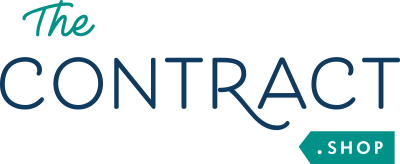Your Cart is Empty
Shop confidently - 14-day no-hassle return policy
Shop confidently - 14-day no-hassle return policy
Shop confidently - 14-day no-hassle return policy
Modern web design is made up of five major elements: aesthetics, usability, visibility, interaction, and content. Each of these elements plays a critical role in enhancing the overall user experience (UX).
So, as you learn what is included in web design services, use these elements as your guide. They should also help you to draft a comprehensive web design contract for your business.
Remember that you need a professionally designed contract that covers the major areas of your operations. Thankfully, you can use The Contract Shop’s web design contract templates prepared by a team of experienced attorneys.
But why are contracts important in projects? A contract is an important document that outlines your legal agreement with your client. This document defines your business interactions with your clients and provides details of your projects, such as the scope of work, price, timeline, deliverables, and any other relevant aspects of the project.
To create a professional and comprehensive contract for your web design services, you need to be aware of the five main areas of web design that you have to cover. Let’s explore them below!
When you understand the basic principles of web design, you and your client can be on the same page regarding expectations. The five key areas of design include:
Your client expects you to offer them a visually striking site that remains impressive across every device. So, you have to come up with creative visual elements for the site without altering your client’s brand image. The visual elements you choose should contribute to the overall brand awareness and improve the brand’s credibility.
It’s your responsibility as the web designer to design a website that reflects your client’s business and visually connects with its intended users. The quality of your work will be determined by the effectiveness of the visual elements you choose.
When someone visits a website, they expect to find a navigable user interface (UI) that enables them to achieve what they need seamlessly. In most cases, users won’t notice a website with great usability, but they’ll immediately notice one with poor usability. No client wants their website to fall into the latter category. It’s your responsibility as the web designer to ensure that your client’s website operates without hiccups or dead-end error pages.
As a web designer, you have to anticipate what the users need and find a way to fulfill it with your design ideas. You achieve this by including web design elements that make the site easily accessible, responsive, intuitive, and navigable. Functional usability also means that the user can access the page they want directly from the homepage without having to go through multiple pages.
This area of web design is closely related to usability because it determines how users engage with the site. A good website should keep its visitors fully engaged and capture their attention.
You can achieve this by creating interesting and engaging designs that’ll catch the attention of every visitor at every stage of their journey through the site. Furthermore, you should include a call to action that encourages visitors to interact with the site the way your clients intend for them to.
Your clients hire you to design their websites not just for display purposes, but also for generating leads, boosting sales, and growing their businesses. Therefore, your designs should help them achieve these objectives.
Once you’ve designed an aesthetically appealing and usable website, the next task is to make it completely visible to the intended users. There’s no need to spend time and resources designing a beautiful website if it won’t be visible.
So, how do you, as a web designer, improve the visibility of a website? You can use various tactics, including search engine optimization (SEO). This involves incorporating optimized content and other web design components into a website so that the search engine’s algorithm can discover the site easily.
As you think about SEO, put web content at the top of the list. Content plays a key role in improving a website’s SEO because it offers internet users answers to their questions. So, make sure every web page has enough content that’s relevant and interesting to the intended users.
These five areas will determine the success of your web design project, so use them as your guide when drafting your contract and planning your projects. Ready to start contracting your work? Check out our customizable resources today!
Kevin Gallagher is the CEO of The Contract Shop®, a contract template store for creative entrepreneurs, freelancers, coaches, and more. His background is in helping online businesses grow, having previously worked at Allbirds managing part of their operations. He is proud to report that his digital artist wife Mandy is a happy customer of The Contract Shop®, and his main motivation is to help as many people like her as possible with the tools that they need to confidently manage their businesses.
Comments will be approved before showing up.
